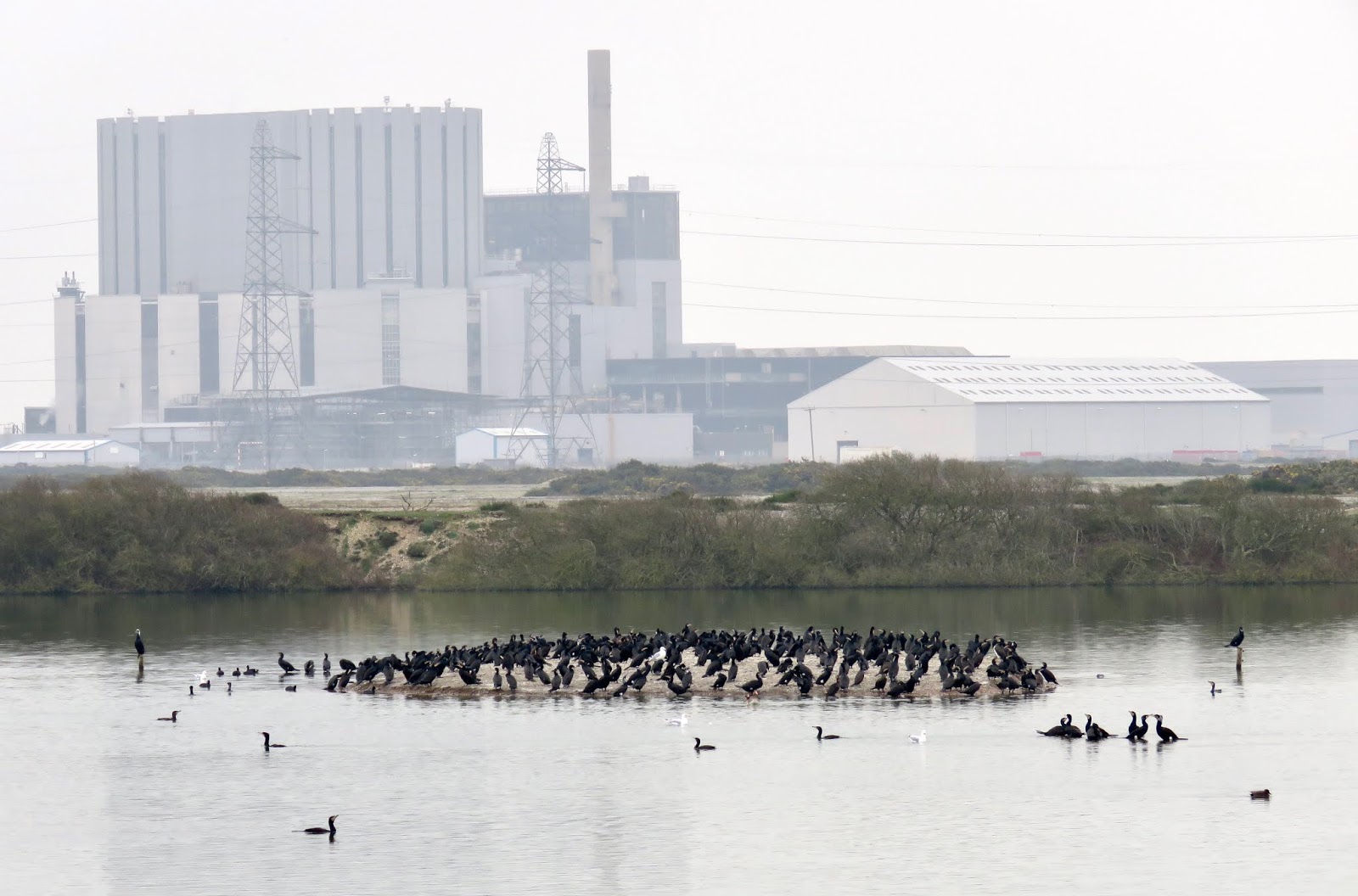Cormorants, Cormorants, everywhere...
It was my pleasure to have just spent a couple of days down at Dungeness, staying at the five-star accommodation to be found at the Hollingworth Hotel (you can check out any time you like, but you can never leave...) Birding was shoe-horned in around the socialising, but plenty of time was spent in the field, although the waterbodies were disappointing for wildfowl numbers. One thing that was not in short supply however, were Cormorants. The accompanying images give you a flavour of how this species is taking over every perch and island, particularly on Burrowes Pit, where there were a good 1,200 present. If only the RSPB possessed a giant flame-thrower. Before anybody gets on their high-horse and complains that we should not condone the contemplation of burning these reptilian waterbirds to a charred crisp, just spend a day down at Dungeness. They bully all other species away from the fish stocks, gorge on the commandeered food supply and take up valuable feeding and roosting spots. They are winged vermin. There, I've said it.
There were avian highlights: 41 close Bewick's Swans at Midley; a drake Smew at Cook's Pool; and best of all the high numbers of Lapwings and Golden Plovers that were present from Boulderwall Farm all the way through to Rye, with a minimum of 5,700 of the former and 1,600 of the later. When they took to the air it was nothing short of spectacular.
And let's finish with some more Cormorants, which have been joined by Black-tailed Godwits and Lapwings, the waders having been hustled into the shallows by those big black Breugellian brutes. Instead of a flame-thrower we could always use Nepalm...





Comments
Did you count them, and determine the carbo:sinensis ratio? ;)
If the oceans hadn't been vacuumed of fish, then I imagine they would be a little more spread out. Instead they concentrate in areas where there's something left to eat.
Until there isn't!
In the Colne Valley there were once huge flocks of these, some of which bred. Safe to say, fish stocks were annihilated. However, there's some evidence that the sort of fish that Cormorants eat have made good some of their numbers.
As for maybe shooting the things? if a few guns were let off in the vicinity of crows where ground nesting birds occurred, it wouldn't be long before any crow would fly away on sight of someone with a stick. They learn fast and remember. It's the reason why Hooded Crows aren't as widely dispersed as Carrions. Hoodies were persecuted more intensively back in the day.